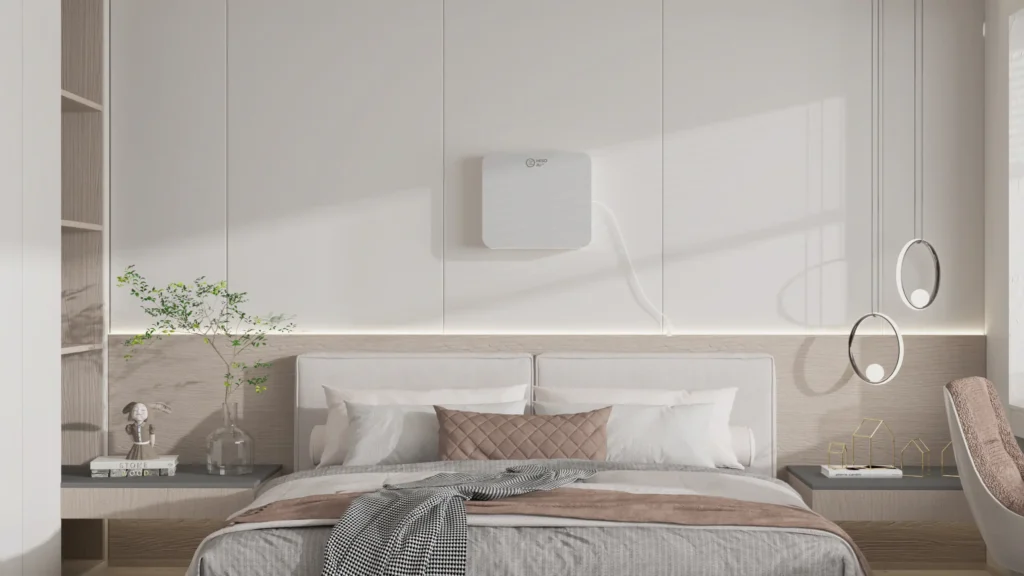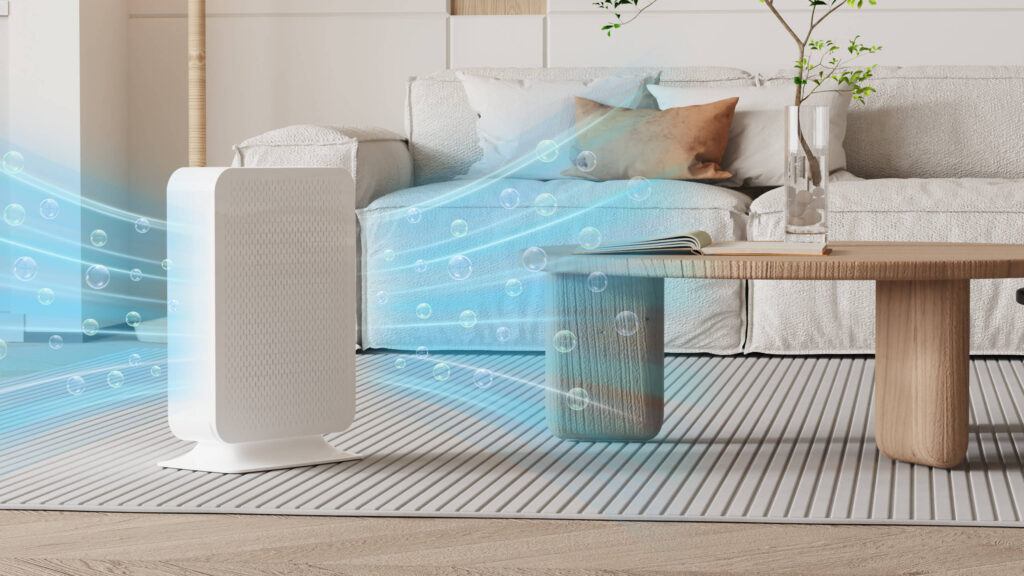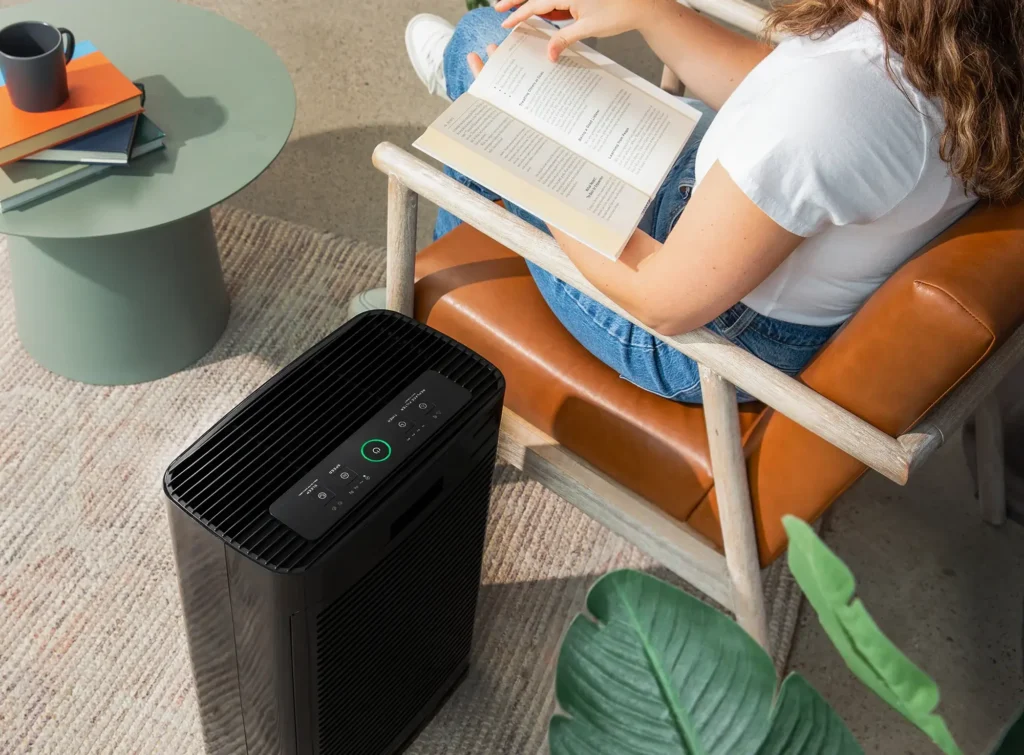
Bildquelle: moldinspectionandtest.com
Schimmel kann Allergien verschlimmern. Kann ich die Luft auf Schimmel testen? Bei Luftproben werden die Schimmelsporen in der Raumluft gemessen, indem die Luft durch ein Gerät zum Auffangen von Schimmelsporen gepumpt und an ein Labor geschickt wird. Die Prüfung der Luftqualität ist eine der wichtigsten, aber weniger häufig durchgeführten Wartungsmaßnahmen. Ihre Gesundheit und die Ihrer Mitmenschen kann unter einer schlechten Raumluftqualität leiden. Durch Routineinspektionen können Probleme jedoch frühzeitig erkannt und die Luftverschmutzung in Innenräumen verringert werden. Der Luftqualitätsindex (AQI) wird zur Bewertung der Luftqualität verwendet. Ähnlich wie ein Thermometer mit einem Bereich von 0 bis 500 Grad misst der AQI die Luftqualität.
Was sind die Anzeichen für eine Schimmelbelastung?rt
In einigenMeinung von ExpertenSchimmel und Schimmelpilze können dazu führen, dass Ihre Wohnung übel riecht und unbewohnbar wird. Wenn sich diese beiden Pilze entwickeln, geben sie geruchsverursachende Gase ab, die sich schnell verbreiten. Außerdem kann der Kontakt mit Schimmelpilzen bei bestimmten Personen zu Irritationen führen. Bei diesen Personen können Symptome wie eine laufende Nase, Keuchen, rote oder juckende Augen oder Haut auftreten. Bei manchen Menschen kann es zu schwerwiegenderen Reaktionen kommen, etwa bei Asthmatikern oder Schimmelpilzallergikern.
Was ist eine Prüfung der Luftqualität in Innenräumen?
Tests auf Allergien, Schimmel und Radon werden in Innenräumen durchgeführt. Mit diesen Tests kann die Sicherheit Ihrer Innenraumluft ermittelt werden. Es ist eine Methode über wie man schimmeligen Geruch im Keller loswird. Bei einem ordnungsgemäßen Test wird die Luft in Ihrer Wohnung oder Ihrem Büro genau untersucht.
- Untergeschoss
- Badezimmer
- Küche
- Schlafzimmer
Vorteile von Luftqualitätstests
Die Bewertung der Luftqualität in Innenräumen bringt unter anderem folgende Vorteile:
- Bessere Gesundheit
- Komfort erhöhen
- Effizienz und niedrigere Stromrechnungen
- Bessere Leistung der Mitarbeiter
- Reduzierte Haus- und Haustiergerüche
Kann ein Luftqualitätstest Schimmel aufspüren?
Ja, die Luftprobenahme zu Hause misst die Konzentration von Schimmelpilzsporen. Die Luftproben werden unter dem Mikroskop untersucht. Lufttests können Schimmelpilze aufspüren, auch wenn sie nicht sichtbar sind. Schimmelpilzsporen, Asbestfasern, flüchtige chemische Substanzen, Pollen, Staub und Allergien können damit nachgewiesen werden.
Luftqualitätstests für Schimmel
Luftverschmutzung in Innenräumen kann zu Atemwegs-, Herz- und Krebserkrankungen führen. Daher kann die Untersuchung und Sanierung Ihrer Innenraumluft Ihre Gesundheit verbessern. Die wichtigsten Gründe für eine Schimmelpilzuntersuchung in Ihrem Haus sind:
- Schimmelgeruch oder Symptome treten auf.
- So identifizieren Sie die Schimmelpilzart in Ihrer Wohnung und lokalisieren ihr Wachstum
- Messung der Luftqualität in Innenräumen durch Messung von Sporen
- So überprüfen Sie, ob der Schimmel vollständig beseitigt wurde
Was wird bei einem Luftqualitätstest festgestellt?
In Luftproben können Sporen nachgewiesen werden. Die Standardkonzentration von Pilzsporen in der Luft ist CFU/m3. Kolonien zeigen die Lebensfähigkeit der Sporen in der Luftprobe an. Die zweiten Luftprobendaten identifizieren die Sporen nach Pilzgattung oder -art. Die meisten Schimmelpilze in der Luft sind:
- Penicillium
- Cladosporium und Aspergillus
- Alternaria
- Stachybotrys (Schwarzer Schimmel)
- Aureobasidium
- Chaetomium
- Epicoccum
- Ulocladium
Wie wird bei einem Luftqualitätstest Schimmel festgestellt?
Ein Probenehmer pumpt eine bestimmte Menge Luft auf ein Sammelinstrument, in der Regel eine Petrischale mit Schimmelpilzkulturen. Bei der Luftprobenahme wird der Schimmelpilzsporengehalt in Ihrem Haus gemessen. Unter einem Mikroskop werden die Luftproben untersucht. Mit Lufttests lässt sich Schimmelpilz nachweisen, auch wenn man ihn nicht sehen kann.
Gibt es ein Gerät, das Schimmel in der Luft aufspürt?
Die Antwort lautet: Ja, es gibt ein Gerät, das die Luftqualität, die Luftqualität der HLK-Kanäle und den Oberflächenschimmel beurteilen kann.
Ausrüstung zur Prüfung der Luftqualität von Schimmelpilzen
Mit den Testkits für die Luftqualität von Schimmelpilzen kann eine Vielzahl von Aeroallergenen und Bioaerosolen schnell erfasst und analysiert werden. Raumluftqualität umfasst:
- AllergenAllergen-D Posi-Track
- Micro5 MicroCell
- BioSis Objektträger
- AllergenAllergen MK-III Objektträger.
Lohnt sich ein Schimmelpilztest?
Das Kit kann Schimmel identifizieren, aber es ist nicht die beste Testform, es sei denn, jemand, den Sie kennen, hat Laborerfahrung und kann Schimmel und Schimmelsporen identifizieren.
Kann ein Luftqualitätsmonitor Schimmel erkennen?
Dank moderner Technologie sind Luftqualitätsmessgeräte für die meisten Menschen zugänglich. Sie können Schimmelsporen in der Luft nachweisen.
Wie genau sind Luftschimmeltests?
Wenn Sie Schimmel riechen, kann er überall im Haus sein. Der erste Schimmeltest in Innenräumen ist die Sporenfallenanalyse. Luftschimmeltests messen die Schimmelbelastung in Innenräumen am besten. Sie zeigen Veränderungen der Luftqualität an.
Arten von Schimmelpilzuntersuchungen
- Abstrichtests - Für diese Tests werden Wattestäbchen verwendet. Abstrichtests liefern innerhalb von Minuten Ergebnisse. Senden Sie das Teströhrchen an ein Labor, um weitere Produkte zu testen.
- Klebestreifen - ein weiteres beliebtes Testkit für Oberflächenschimmel. Die Benutzer müssen auf die Laboranalyse dieser Tests warten.
- Luftpumpen - zum Testen der Raumluft auf einem Tisch oder einer Arbeitsplatte. Die Pumpe saugt Luft und Schimmel an. Ein Labor muss das Kit nach dem Test prüfen.
- Petrischalentest - Schimmelbildung mit einer mikrobiell kultivierten Oberfläche. Die Schalen schimmeln schnell und zeigen die Auswirkungen. Luftqualitäts- und Schimmelbestimmungen sind am genauesten, wenn sie in einem Labor durchgeführt werden.
Funktioniert ein Schimmelpilzlufttest wirklich?

Bildquelle: Hayward Score
Microscopic analysis is most mycology labs' "Gold Standard" and accurate. Microscopes identify genera visually.
- Gewindebohrer-Test
- Schimmelbänder
- Sporen-Fallen
- Polymerase-Kettenreaktion
- CAP14 Test
Testen der Luftqualität auf Schimmel: Was ist ein sicherer Wert?
Es gibt keine gesundheitsbezogenen Kriterien für biologische Stoffe in der Innenraumluft. Bei der Bewertung der Luftqualität in Gebäuden sollten keine Schimmelpilzproben genommen werden. Eine Schimmelpilzsporenkonzentration von mehr als 500 sp/m3 gilt als hoch, basierend auf einigen Testergebnis. Jeder Schimmel in einem Gebäude ist gefährlich. Für gewerblich genutzte Gebäude gibt es keine EPA-akzeptablen Schimmelpilzwerte oder Anforderungen an das Pilzwachstum.
Wie und wann wird die Luftqualität in der Wohnung auf Schimmel untersucht?
Bei Ihnen zu Hause oder in Ihrem Unternehmen sind Rohrleitungen undicht oder es gibt Wasserprobleme. Nachdem Sie oder ein Fachmann den Schimmelpilz entfernt haben, möchten oder müssen Sie einen Lufttest durchführen, um festzustellen, ob die Schimmelpilzbelastung wieder normal ist.
Wie kann man feststellen, ob sich Schimmel in der Luft befindet?
Wenn sich der Schimmel in den Luftkanälen ausbreitet, kann der Geruch durch den Betrieb der Klimaanlage verschlimmert werden. Schimmel wächst an feuchten Orten. Klimaanlagen laufen nur gelegentlich, so dass sich Feuchtigkeit und Schmutz im Klimagerät und in den Lüftungskanälen ansammeln, wo die meisten Schimmelpilze wachsen. Schimmel ist gefährlich, egal ob Sie ihn finden oder ein Servicetechniker ihn findet.
7 Methoden zur Prüfung der Luftqualität in Ihrem Haus
Die Beseitigung von Verschmutzungsquellen verbessert die Luftqualität in Innenräumen. Es ist wichtig zu wissen, welche Methode für Ihr Budget und Ihre Zeit am besten geeignet ist. Wie Himalayasalzlampen können die Luft nicht reinigen da Salz die Luftfeuchtigkeit absorbiert und verdunstet, wobei sich Schimmelsporen bilden.
#1 Kauf eines Luftreinigers
Raumluftfilter sind unerlässlich. Ein komplettes Filtersystem beseitigt in diesen Luftreinigern die Luftschadstoffe. Luftreiniger können je nach Filter Allergien, Krankheitserreger, Feinstaub und gasförmige Schadstoffe beseitigen. Darüber hinaus ist die Möglichkeit, die beste Platzierung für einen Luftreiniger im Schlafzimmer wird Ihren Kauf mit den folgenden Anleitungen lohnenswert machen:
- Halten Sie die Luftfeuchtigkeit im Haus den ganzen Tag über unter 50%. Prüfen Sie die Luftfeuchtigkeit mehrmals am Tag.
- Stellen Sie die Luftzirkulation in Ihrem Haus sicher. Verwenden Sie Abluftventilatoren für Küche und Bad im Freien.
- Reparieren Sie undichte Stellen im Dach, in den Wänden und in den Rohrleitungen, um Schimmelbildung zu verhindern.
- Die Aufräum- und Trocknungsarbeiten sollten innerhalb von 24-48 Stunden abgeschlossen sein.
- Streichen Sie zuerst mit Schimmelschutzmitteln.
- Schimmelpilz abtötende Produkte reinigen Bäder.
- Ersetzen Sie durchnässte Teppiche und Polstermöbel.
#2 Luftqualitätstester für Schimmel
Bei der Prüfung der Luftqualität wird Schimmel festgestellt. Sichtbarer Schimmel wird chemisch getestet. Wenn Sie befürchten, dass Schimmel Ihr Haus verschmutzt, Sie ihn aber nicht sehen können, kann ein Luftqualitätstest die Sporen messen. Die Verbesserung der Luftqualität in Innenräumen kann sich positiv auf die Gesundheit Ihrer Familie auswirken. Aber Sammeln Luftreiniger Staub?? Die Identifizierung von Schadstoffen in Innenräumen und die Wiederherstellung einer guten Luft beginnt mit den folgenden Maßnahmen:
- Kaufen Sie einen IAQ-Monitor.
- Symptome prüfen
- Überprüfen Sie die Radon- und CO-Werte.
- Luftreiniger
- Rufen Sie einen Experten für Luftqualität an.
Luftqualitätstests für Schimmel: Zusammenfassung
Ein Luftqualitätstest wird den Erfolg Ihres Schimmelpilzbeseitigungsprojekts bestätigen. Sie wissen bereits, welcher Schimmeltest für Sie am besten geeignet ist und wie lange es dauern wird, bis Sie das Ergebnis vom Labor erhalten. Sollten dennoch Probleme auftreten, können Sie die Hilfe von Luftreiniger Hersteller wie hisoair denn es ist ein Experte, der Ihnen hilft.







